
SOFT MATERIALS
Scope & Guideline
Unveiling the Potential of Soft Materials
Introduction
Aims and Scopes
- Soft Matter Synthesis and Characterization:
The journal covers innovative methodologies for synthesizing soft materials, including hydrogels, elastomers, and nanocomposites. Emphasis is placed on the characterization of their physical and chemical properties, including rheological behavior, self-assembly, and thermal stability. - Functional Applications of Soft Materials:
Research focusing on the practical applications of soft materials in diverse fields such as drug delivery, tissue engineering, and flexible electronics is a core area. The journal encourages studies that explore the integration of soft materials into real-world applications. - Interdisciplinary Approaches:
"SOFT MATERIALS" promotes interdisciplinary research that combines principles from physics, chemistry, materials science, and biology. This includes studies that explore the interactions of soft materials at the molecular level and their macroscopic implications. - Responsive and Adaptive Materials:
The journal highlights research on materials that exhibit responsive behavior to external stimuli (e.g., temperature, pH, light). This includes the development of smart hydrogels and stimuli-responsive polymers, which are vital for applications in drug delivery and sensor technology. - Nanostructured and Hybrid Materials:
Research on nanostructured soft materials and hybrid systems that combine different types of materials to achieve enhanced properties or functionalities is a significant focus area. This includes the study of composite materials that leverage the unique properties of their components.
Trending and Emerging
- Sustainable and Biodegradable Materials:
There is a growing interest in the development of sustainable and biodegradable materials, particularly in the context of packaging and biomedical applications. Research on materials derived from natural sources and their degradation pathways is increasingly prevalent. - Smart and Self-Healing Materials:
The trend towards smart materials that can self-heal or adapt in response to stimuli is on the rise. This includes hydrogels and polymers that can repair themselves after damage, which is crucial for extending the lifespan of materials in practical applications. - Advanced Drug Delivery Systems:
Research focusing on soft materials for advanced drug delivery systems is gaining attention, especially studies that utilize hydrogels, nanoparticles, and responsive polymers to enhance the efficacy and targeting of therapeutic agents. - Nanocomposites and Hybrid Structures:
The integration of nanomaterials into soft matrices to create hybrid systems with enhanced mechanical, thermal, and electrical properties is a prominent trend. This includes the exploration of new methodologies for synthesizing and characterizing these complex materials. - Electroactive and Conductive Soft Materials:
The publication of research on electroactive and conductive soft materials is increasing, particularly in applications related to flexible electronics, sensors, and actuators. This trend reflects the demand for materials that can conduct electricity while maintaining flexibility.
Declining or Waning
- Conventional Polymer Studies:
Research that focuses solely on traditional polymers without innovative modifications or applications has seen a decrease. The trend is moving towards more complex systems that integrate functionalities or hybridize materials for enhanced properties. - Basic Theoretical Models Without Experimental Validation:
There has been a noticeable decline in publications that propose theoretical models without accompanying experimental data. The journal is increasingly favoring studies that validate theoretical predictions with practical experiments. - Non-Responsive Materials:
The focus on static or non-responsive materials appears to be waning as the field shifts towards dynamic and responsive materials that can adapt to environmental changes. Research that does not incorporate these elements may find less traction.
Similar Journals

ADVANCED MATERIALS
Connecting Ideas, Driving Innovation in Materials ScienceAdvanced Materials, published by Wiley-VCH Verlag GmbH, is a premier academic journal that serves as a crucial platform for cutting-edge research in the field of materials science and engineering. With an impressive impact factor and ranking among the top tiers in various categories, including Materials Science, Mechanical Engineering, and Nanoscience, this journal is recognized for its high-quality contributions and relevance to contemporary research challenges. Spanning from 1989 to 2024, Advanced Materials not only features groundbreaking studies but also provides insights into innovative applications and advancements in material design and engineering. Researchers, professionals, and students alike will benefit from the rigorous peer-review process and diverse range of topics covered, making it an indispensable resource for those aiming to stay at the forefront of materials science innovation.

Functional Materials
Shaping Tomorrow with Functional Material Insights.Functional Materials is a pioneering journal dedicated to the exploration and application of innovative materials science. Published by the NATL ACAD SCIENCES UKRAINE, INST SINGLE CRYSTALS, this journal provides a platform for researchers, professionals, and students to disseminate their findings in the realm of functional materials, which play a crucial role in various technological advancements. With an ISSN of 1027-5495 and E-ISSN 2218-2993, Functional Materials features research articles that span the spectrum of material properties and behaviors, contributing to both theoretical and applied sciences. Despite its current categorization in the Q4 quartile of Materials Science (miscellaneous) as of 2023, the journal aspires to foster impactful research, encouraging submissions that push the boundaries of knowledge and innovation in the field. Located in Kharkiv, Ukraine, the journal is an integral resource for anyone involved in materials science, providing insights that drive future discoveries and applications.
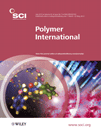
POLYMER INTERNATIONAL
Connecting Researchers to Cutting-edge Polymer InsightsPOLYMER INTERNATIONAL is a leading journal in the field of polymer science, published by Wiley, one of the most esteemed scholarly publishers. With an ISSN of 0959-8103 and an E-ISSN of 1097-0126, this journal has been a pivotal platform for researchers since its inception in 1991, now extending its coverage until 2024. The journal boasts a commendable standing in various scientific domains, achieving a Q2 quartile ranking in Materials Chemistry, Organic Chemistry, and Polymers and Plastics as of 2023. Additionally, it holds impressive Scopus ranks, including Rank #47 in Organic Chemistry and Rank #40 in Polymers and Plastics, placing it within the top percentiles of its categories. Researchers, professionals, and students alike can benefit from its rich array of articles that contribute to the understanding and advancement of polymer technology and materials science. Although not an open access journal, POLYMER INTERNATIONAL remains crucial for disseminating high-quality research that drives innovation and development within the field.

Polymer-Plastics Technology and Materials
Transforming Ideas into Material SolutionsPolymer-Plastics Technology and Materials is a premier academic journal published by Taylor & Francis Inc., dedicated to the dynamic fields of chemical engineering, materials chemistry, and polymers and plastics. With an impact factor that reinforces its reputation, this journal is strategically indexed in Scopus, ranked notably within its categories (Q2), showcasing its influence and relevance in the academic community. Since its inception in 2019, the journal has served as an essential platform for researchers, professionals, and students to disseminate innovative studies and advancements in polymer science and materials technology. As an Open Access publication, it ensures that cutting-edge research is accessible to a global audience, fostering collaboration and knowledge sharing in the material sciences. Located in the United Kingdom, Polymer-Plastics Technology and Materials continues to enhance the dialogue within the industry, addressing critical challenges and exploring emerging trends that shape the future of polymer and plastics technologies.
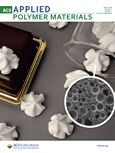
ACS Applied Polymer Materials
Innovating Materials, Transforming ApplicationsACS Applied Polymer Materials is a prestigious journal published by the American Chemical Society, specifically tailored for the dynamic fields of Organic Chemistry, Polymers and Plastics, and Process Chemistry and Technology. With its ISSN 2637-6105, the journal has rapidly established itself within the academic community, achieving a distinguished Q1 quartile ranking across multiple categories in 2023. This places it among the top-tier journals globally, reinforcing its critical role in disseminating groundbreaking research and innovation in polymer science. The journal is known for its rigorous peer-review process and publishes high-quality articles that are pivotal for researchers, professionals, and students eager to advance knowledge in polymer materials and their applications. Positioned to cover converging themes from 2019 through 2024, ACS Applied Polymer Materials embraces a wide scope of studies, from fundamental chemistry to practical engineering applications, thereby fostering significant advancements in material science. While it offers traditional access options, the journal's impact is reflected in its impressive rankings within Scopus, indicating its relevance and influence in the chemical engineering domain. Join the global community of innovators and discover the latest insights that continue to shape the landscape of applied polymer research.
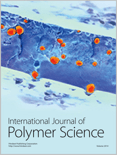
International Journal of Polymer Science
Unlocking the Potential of Polymer ScienceInternational Journal of Polymer Science is a prominent and peer-reviewed journal dedicated to advancing the field of polymer science. Published by Hindawi Ltd, this open-access journal has been making significant contributions to the discipline since its inception in 2009, ensuring that research findings are accessible to a global audience. With an impressive impact factor and positioned in the Q2 quartile for Polymers and Plastics as of 2023, it ranks 46th out of 161 in the Scopus database, reflecting its strong standing in the research community. The journal welcomes innovative research across various topics within polymer science, including synthesis, characterization, and applications in diverse industries. By providing a platform for scholars, professionals, and students, the International Journal of Polymer Science not only encourages the dissemination of knowledge but also fosters collaboration and innovation in this essential field. Based in Egypt and operating under a rigorous selection process, it remains a vital resource for anyone involved in polymer research.

JOURNAL OF PHOTOPOLYMER SCIENCE AND TECHNOLOGY
Driving Discovery in Photopolymer Science and TechnologyJOURNAL OF PHOTOPOLYMER SCIENCE AND TECHNOLOGY, published by the Technical Association of Photopolymers in Japan, serves as a crucial platform for advancing research and application in the fields of photopolymer science and technology. Established in 1988, this peer-reviewed journal encompasses a broad scope that includes critical studies in materials chemistry, organic chemistry, and polymers and plastics. Although currently listed within the Q4 quartile categories for these disciplines, it is a vital resource for researchers aiming to innovate and explore the intersections of these materials. The journal, with its ISSN 0914-9244 and E-ISSN 1349-6336, welcomes submissions that provide comprehensive insights and original research findings. While it does not offer open-access options, the journal strives to maintain an impactful contribution to the scholarly discourse, making it an essential resource for students, professionals, and researchers alike seeking to keep abreast of the latest developments in photopolymers.

POLYMERS & POLYMER COMPOSITES
Pioneering Insights in Polymer ApplicationsPOLYMERS & POLYMER COMPOSITES, published by SAGE Publications Ltd, is a prestigious journal dedicated to the exploration of significant advancements in the diverse fields of polymers, composite materials, and their innovative applications. With an ISSN of 0967-3911 and E-ISSN of 1478-2391, this journal plays a crucial role in the academic community, boasting an impressive ranking in the Q2 quartile across pivotal categories such as Ceramics and Composites, Materials Chemistry, and Polymers and Plastics in 2023. Positioned in the United Kingdom, it serves as a vital resource for researchers and professionals, providing insights into current trends and future directions in material science. Despite its availability not extending to Open Access, the journal aims to promote rigorous peer-reviewed research, thus fostering knowledge and collaboration among scholars. With publication convergence from 1993 to 2024, POLYMERS & POLYMER COMPOSITES stands as a cornerstone for those pursuing advanced understanding and excellence in material innovation.
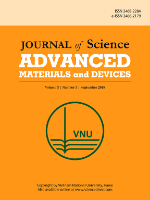
Journal of Science-Advanced Materials and Devices
Advancing Materials Science Through Open Access InnovationJournal of Science-Advanced Materials and Devices is a leading open-access journal published by Vietnam National University, dedicated to advancing the field of materials science through cutting-edge research and innovative developments. Since its inception in 2016, this journal has become a pivotal platform for sharing insights and discoveries in various subfields, including biomaterials, ceramics and composites, and electronic, optical, and magnetic materials. With impressive quartile rankings, including Q1 across multiple categories in 2023, and a notable Scopus ranking placing it in the top 15th percentile for ceramics and composites, it highlights the journal’s influence and prestige within the global academic community. Open Access since its launch, the journal aims to facilitate unrestricted dissemination of scholarly work, empowering researchers, professionals, and students to engage with the latest advancements. The Journal of Science-Advanced Materials and Devices is vital for those seeking high-quality contributions that influence both theoretical understanding and practical applications in the ever-evolving landscape of materials science.
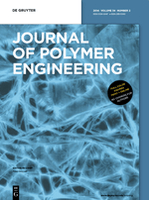
JOURNAL OF POLYMER ENGINEERING
Exploring the Boundaries of Materials Chemistry.JOURNAL OF POLYMER ENGINEERING, published by Walter de Gruyter GmbH, stands as a pivotal platform in the field of polymer science and engineering. With an ISSN of 0334-6447 and an E-ISSN of 2191-0340, this journal has been a vital contributor to the academic landscape since its inception, spanning publications from 1981 to 2024. As a recognized entity in the realms of Chemical Engineering, Materials Chemistry, and Polymers and Plastics, it holds a respectable position in Q3 quartile rankings according to the latest assessments. The journal is positioned to promote the exchange of cutting-edge research findings, technological advancements, and critical reviews that address the complexities of polymer application and innovation. Researchers and professionals will find a wealth of information, from experimental methodologies to theoretical analyses, all designed to inspire and elevate the current understanding of polymer engineering. By fostering collaboration and dissemination of knowledge, the JOURNAL OF POLYMER ENGINEERING remains crucial for advancing research and education in its specialized domains.